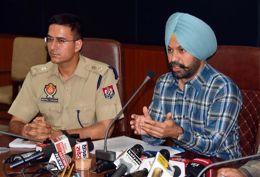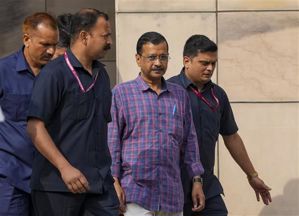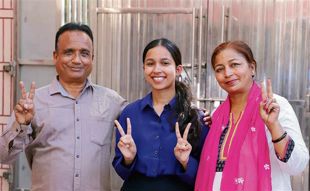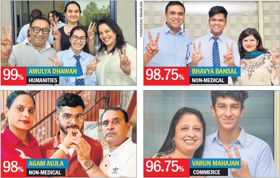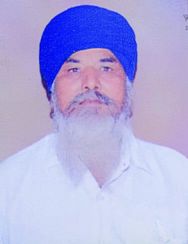
Nonika Singh
Awebsite advising women to travel safe rates Delhi thus. Delhi: Men score ten out of ten for worst-behaved men in the city. Besides, there are endless articles and blogs on why Indian men stare, what is most annoying about them, why they make disgusting partners... so on and forth.
Indian men need to change their mentality, there is a problem with it. For too long we have been hearing this. Filmmaker Vikram Bhatt might think Bollywood is everyone's favourite whipping boy — dare we say Indian men come rather close and are an equally pet target.
Close your eyes — picture the average Indian male and a dark sinister image appears; an MCP at best and an outright lecher at worst. And it's this image that was magnified and amplified many times over and at a much wider stage when Leslee Udwin's India's Daughter was televised officially in the UK and unofficially found its way into India.
Let me state at the very onset that this piece doesn't hold a brief either for or against Leslee Udwin. Perhaps, the Israel-born director, herself a rape survivor, could have delved into the issue a little better and with greater sensitivity. In all likelihood, the government overreacted.
For all said and done, the film is a cautionary reminder to modern young Indian women who take their freedom for granted. Indeed, all is not well in the India of their dreams. But beyond the furore over India's Daughter, we need to look at the average Indian male, who for long has been berated and put on the mat for the crimes he has committed and often for ones he hasn't.
Listen to these voices which have been played out time and again in the public space:
"We have the best culture. In our culture, there is no place for a woman."
—ML Sharma, defence lawyer
in the Delhi rape case
"A girl is far more responsible for rape than a boy. You can't clap with one hand — it takes two hands. A decent girl won't roam around at 9 o'clock at night."
—The accused, Mukesh Singh
No two ways about it, the statements are outright misogynistic. No one in a right frame of mind can condone these. Yes, in India such a mindset is echoed often enough cutting across class and religion. The contention here is not that such men don't exist in our socio-cultural landscape, but that only these alone do and these utterances are representative of the Indian male. Loaded with it is the presumption that misogyny is the sole prerogative of Indian men, even though men the world over hold similar skewed opinions.
No doubt we need to look at the rapist closer home in the eye, but to think that he mirrors all men in India is missing the big picture. By pinning down the entire class of men each time we are letting the government, whose job it is to instil the fear of law among the culprits, off the hook. Within India, there are so many Indias, yet we erroneously think one view fits all men and that they are a xerox copy of one another.
“Since the December 2012 gang rape, Indian and international media alike have portrayed Indian men either as sexual predators who prey upon helpless women or fearful guardians who are burdened with the responsibility of safeguarding their daughters or sisters.”
It's this binary that US-based anthropologist Harjant Gill has a problem with. As he has been exploring the same in his films on masculinity, guess what he discovered? Right in the heart of what he calls the “Macholand of Punjab,” he met lots of men who did not fit into the stereotypical definitions of Indian men either being rapists or saviours of women's honour. He shares, “These men, like so many women out there, are making different choices. They are choosing to be responsible, they are choosing to share their power and to be equal, they are choosing love over fear and intimidation — and they are living very fulfilling lives.”
In an ideal world, his film Mardistan that portrays this refreshing image of men should have created a buzz. But except for a few screenings at festivals, it never occupied prime-time space. Why? Is it because abhorrent repulsive behaviour fascinates us more and grabs greater eyeballs? Nor do we hail Bollywood films which are showing men in many hues and shades. Remember Queen and the middle-class father whose only concern after the daughter is jilted at the altar is her well-being, not what society would say. In Mary Kom a husband supports his wife and her career all the way. And such men are for real, not just a flight of fancy of progressive film directors.
Yet the media is preoccupied, if not obsessed, with the stalker image that it believes Hindi cinema has long since romanticised. In fact, our bite-hungry media while condemning stereotypes only perpetuates the same ceaselessly. Eminent theatre person Neelam Mansingh Chowdhry, many of whose plays question set notions both about men and women, says, “Where is the space for real and meaningful debate, especially on television channels, where the participants are invariably representatives of this or that political party? Men and women of wisdom and sagacity with independent minds rarely find a voice.”
With these words, Neelam underlines what others too believe — that the Indian media is more belligerent than representative. Balwant Thakur, Jammu-based theatre director, too nods, “There is no place for positive thought. We are caught in a one-sided, single-dimensional discourse that has only one colour, dark and regressive.” As we are overreacting and overhyping the negative images, these are not only getting relayed at supersonic speed, but also being spawned.
Decode and dissect the Indian men by all means, but for heaven's sake, do not reduce them to archetypes or define them in generic terms. Post-rape incidents, sadly, there is an overwhelming tendency to do so. Talk of sexual violence and we tend to preclude men from being victims of the same. Gill states, “We tend to stereotype Indian men as the ‘perpetrators’ of violence, but we forget that men are frequently victims of violence, including sexual violence. At least three out of the four men, whose experiences I chronicle in my documentary Mardistan, have dealt with some form of violence — whether it's emotional, verbal, physical or sexual abuse.” Yet, how many discourses dwell upon men as victims, even though staggering figures are in the public domain. In 2007, the Ministry of Women and Child Development surveyed 12,477 children to learn of their experience of abuse. 68.99 per cent of children, over half of them boys, reported suffering physical violence. One in 12 children, again a majority of boys, reported suffering sexual violence. Yet, any talk on men begins and ends with them as the prime suspects often pronounced guilty before the trial begins. And its surveys such as these carried out by the Centre of Research on Women, US, and Instituto Promundon in Brazil that will find and gain more prominence. Indian men are among the most sexually aggressive. Twenty-four per cent of Indian men have committed sexual violence at some point in their lives, 20 per cent forced their partners to have sex with them, and only 17 per cent of Indian men could be considered “highly equitable”.
Amidst all this constant drumming and drilling of Indian men as one of the worst kind the world has produced, what is often glossed over is the truth that men in India are as much victims of circumstances as their female counterparts. Their choices, argue sociologists, are no better than those of women. Their lives too are dictated by family and societal pressures. They too are expected to fall in line, be tough, be successful and take care of a family. And all of this can be as constraining as being born a woman in Indian society.
Sexual freedom and choices in India are undeniably limited, perhaps sexual frustration does play havoc and determines men's attitudes towards women. But, how can there be one template of an Indian man? If some misguided men are unanimous in their condemnation of women, as many go out of the way to buttress their victim-blaming approach, especially when it comes to rape incidents, so it seems is the counter lobby. How this tribe loves to play out this bigoted, sexually frustrated being, even though the liberal one exists in fair if not equal measure. According to a survey conducted by a leading matrimonial website, 83.5 per cent men said they would want a partner who is career-oriented, who can be a good friend and shares the same tastes. The liberal man, Neelam argues is not just a product of the 21st century, but has existed in every generation. Thakur, whose understanding of young men stems from his close association with them as a theatre practitioner, vouches for their positive frame of mind.
Feminism, rather let's say equality of sexes, in fact, is an ideal upheld not just by women but a large number of Indian men too. Look around and you will find more than one man standing up and championing women's rights. Beyond the oppressive patriarchy and the brute misogyny, the Indian man is changing and for the better. Grant him the due space and the space inhabited by many more of his kind could grow manifold. Air the voice of the disgruntled men like the accused in the Nirbhaya rape case by all means, but allow room for such jarring notes to be countered by the saner ones. Do not presume men, yes Indian men, exist as linear narratives alone. They too are learning to be what it means to be a man in the maze of modern complexities of life. They deserve to be understood as multi-dimensional beings and the diversity of their voices needs to be heard loud and clear.






















